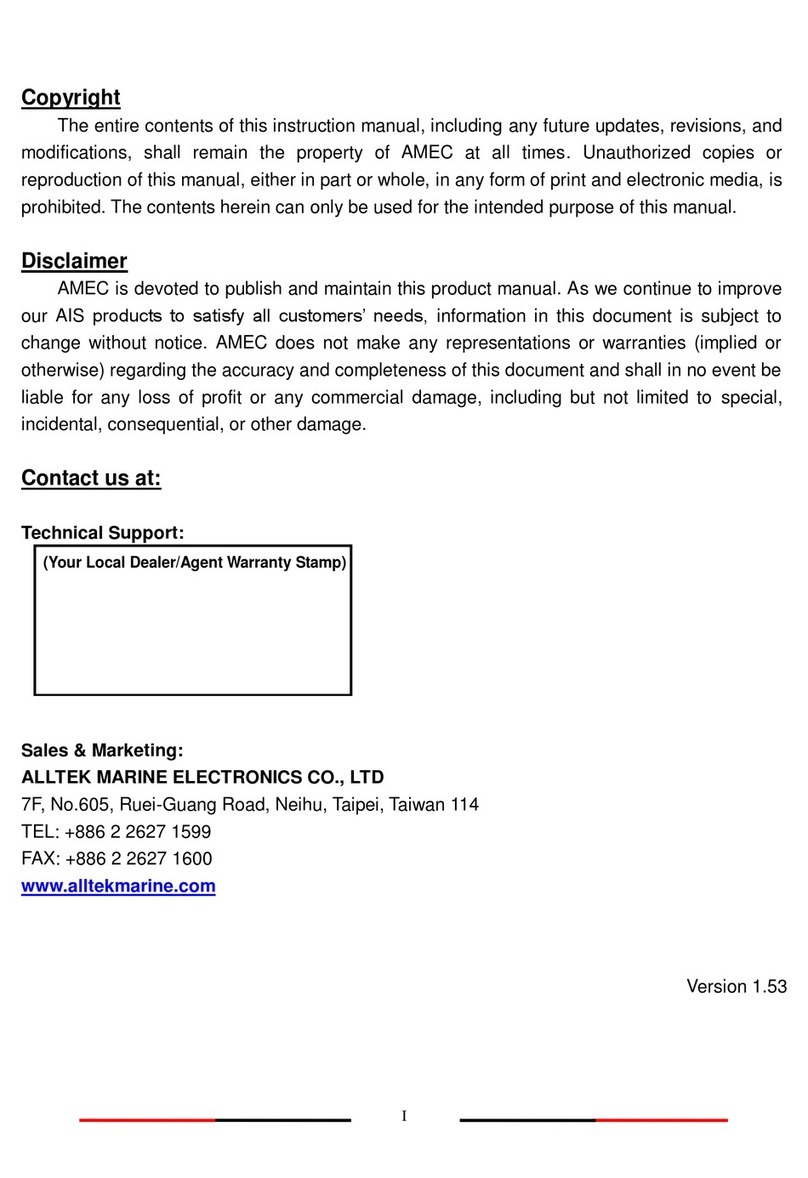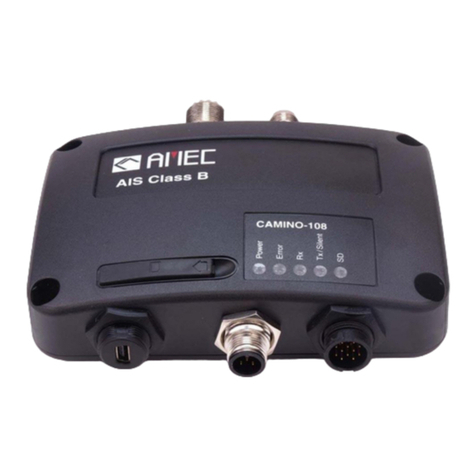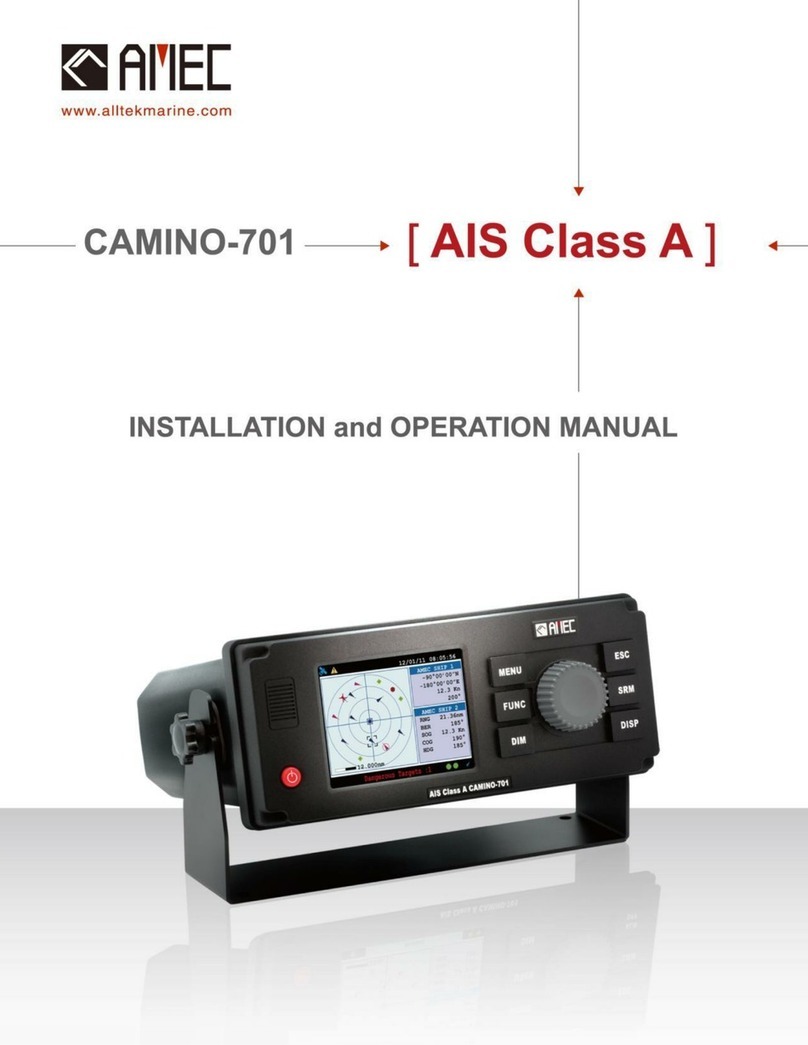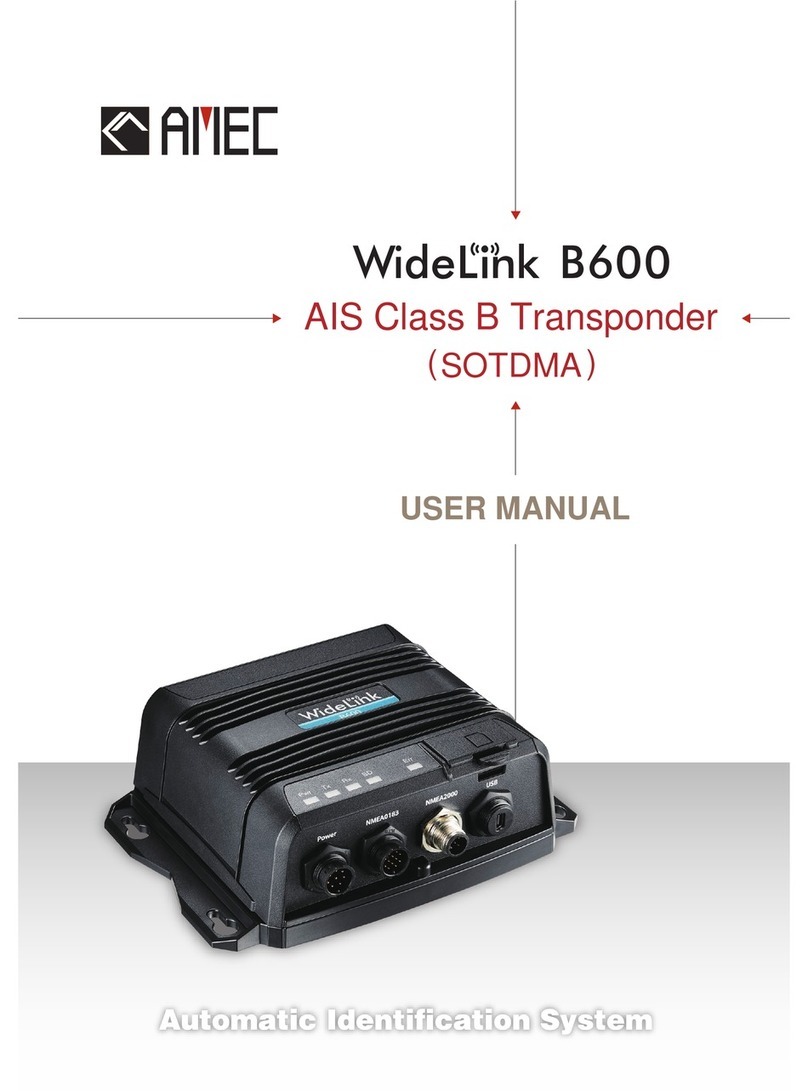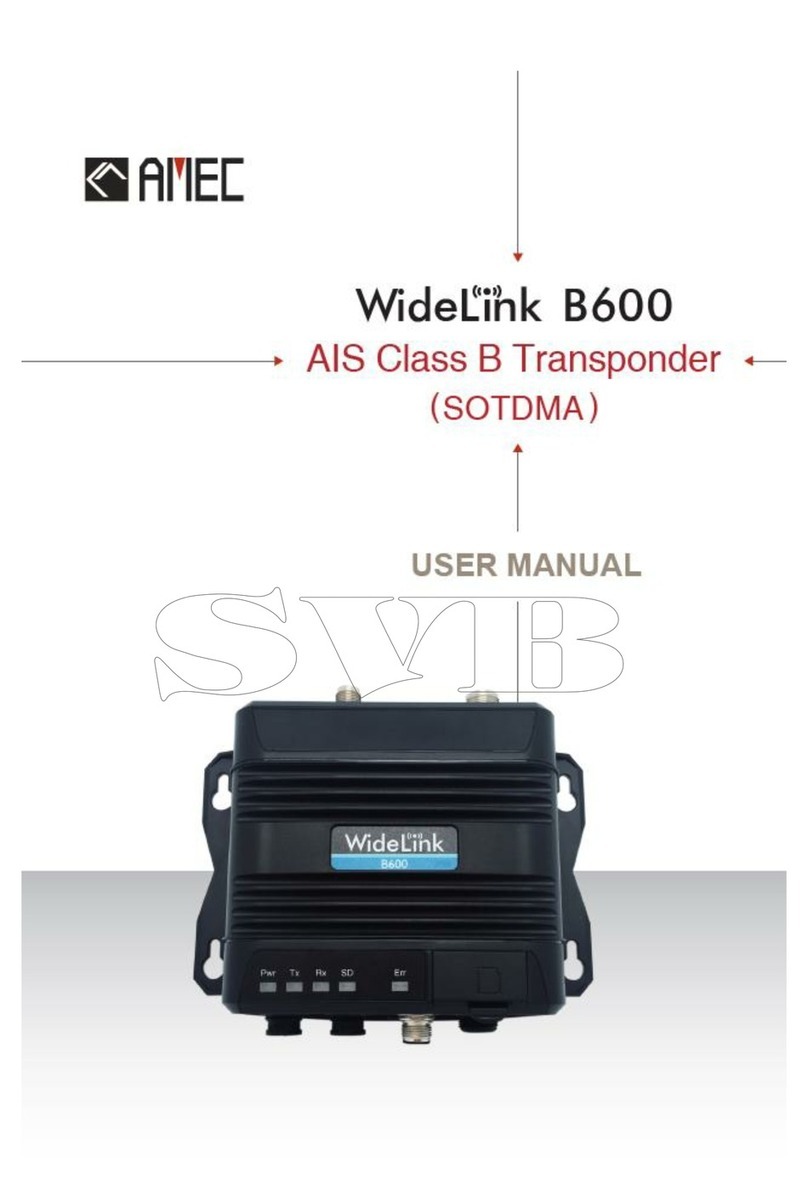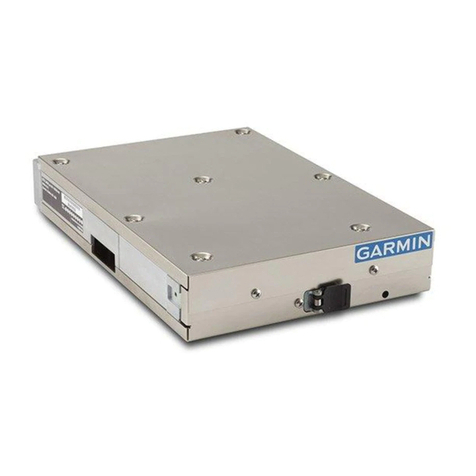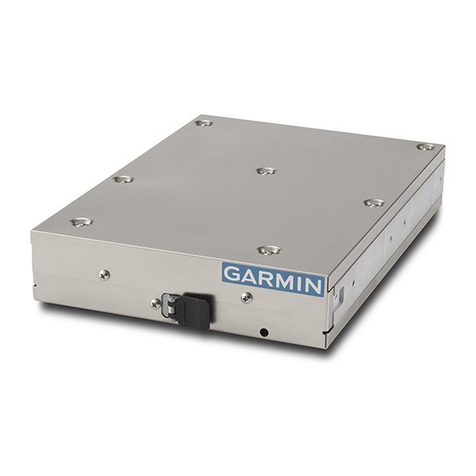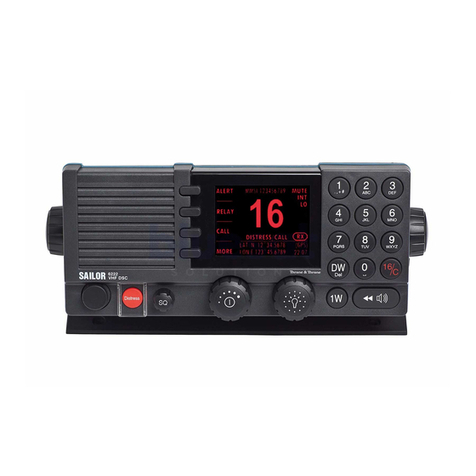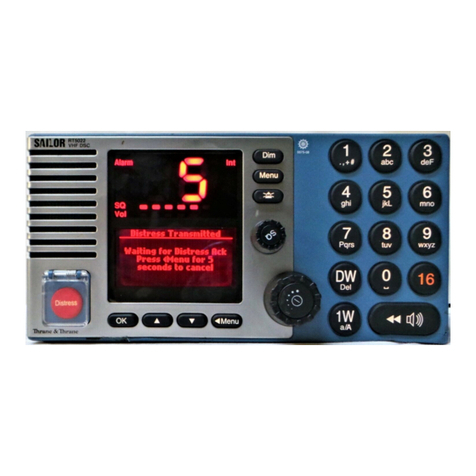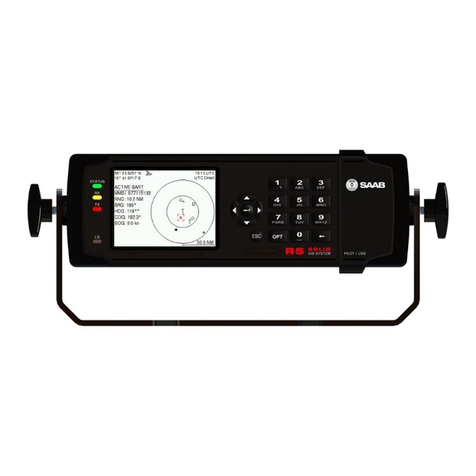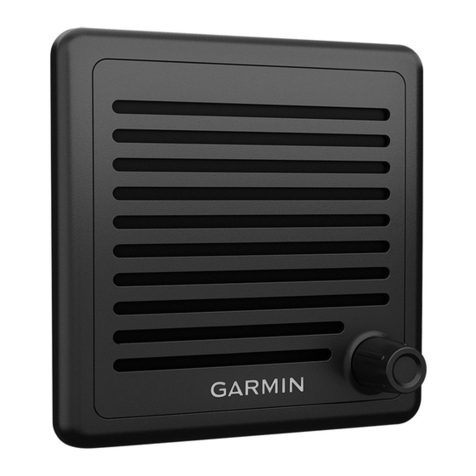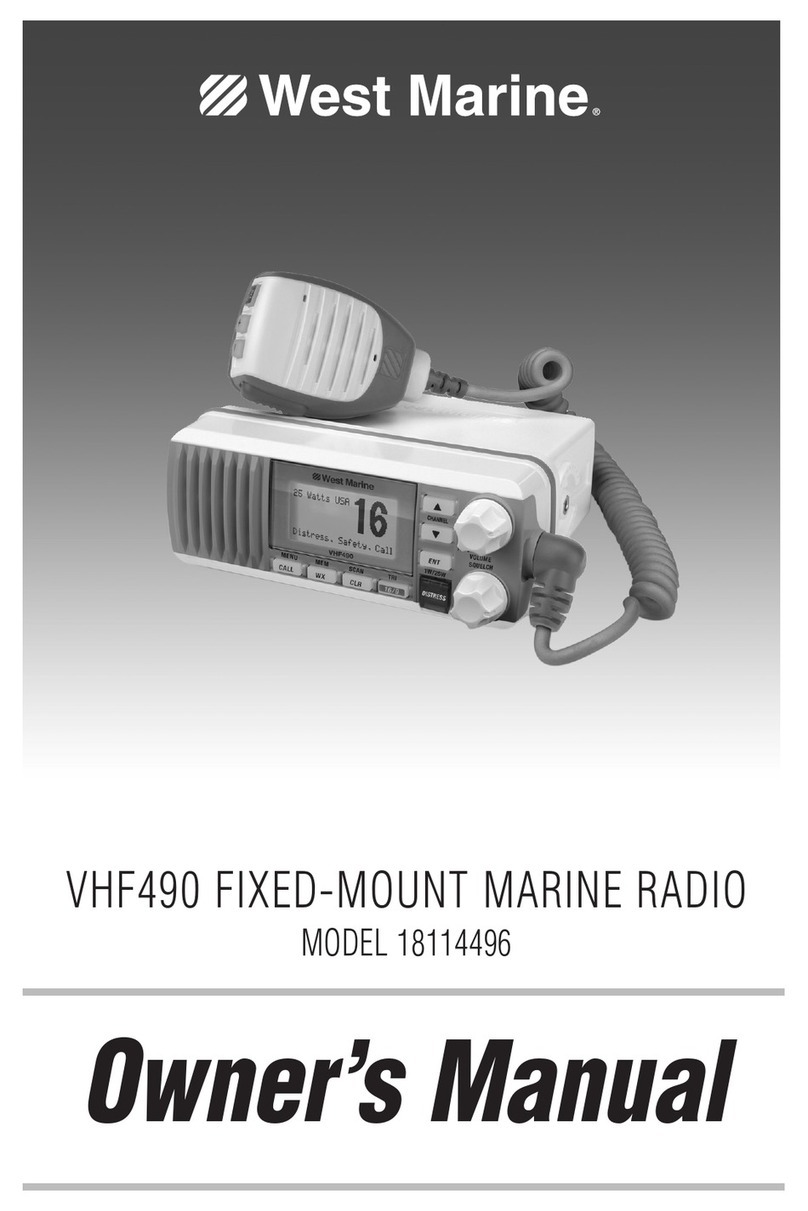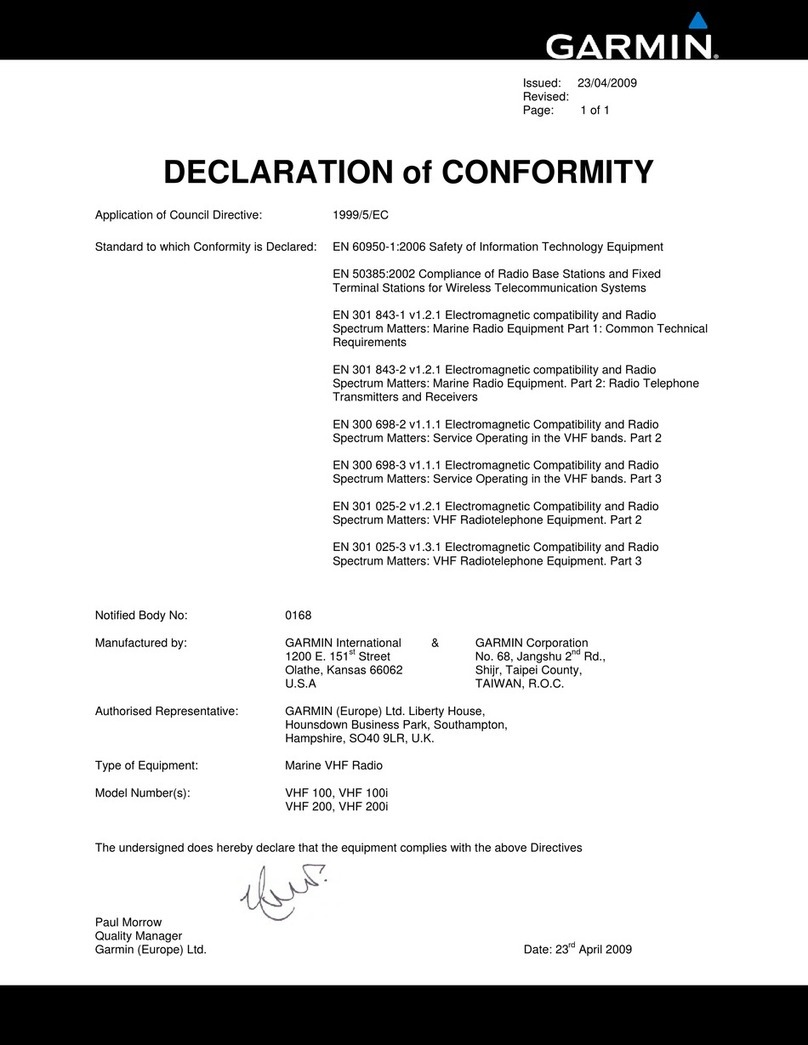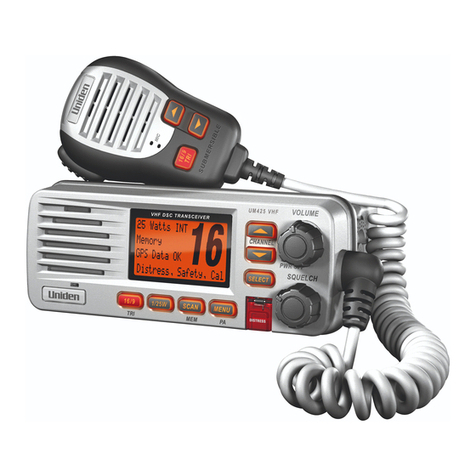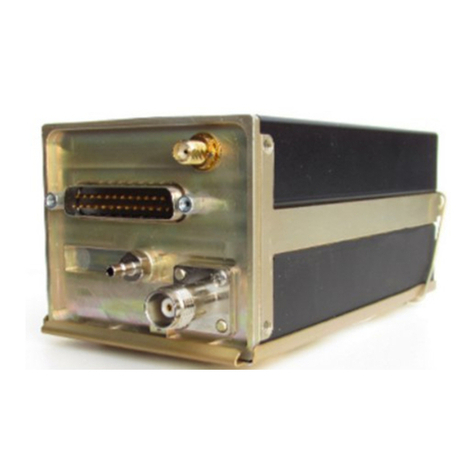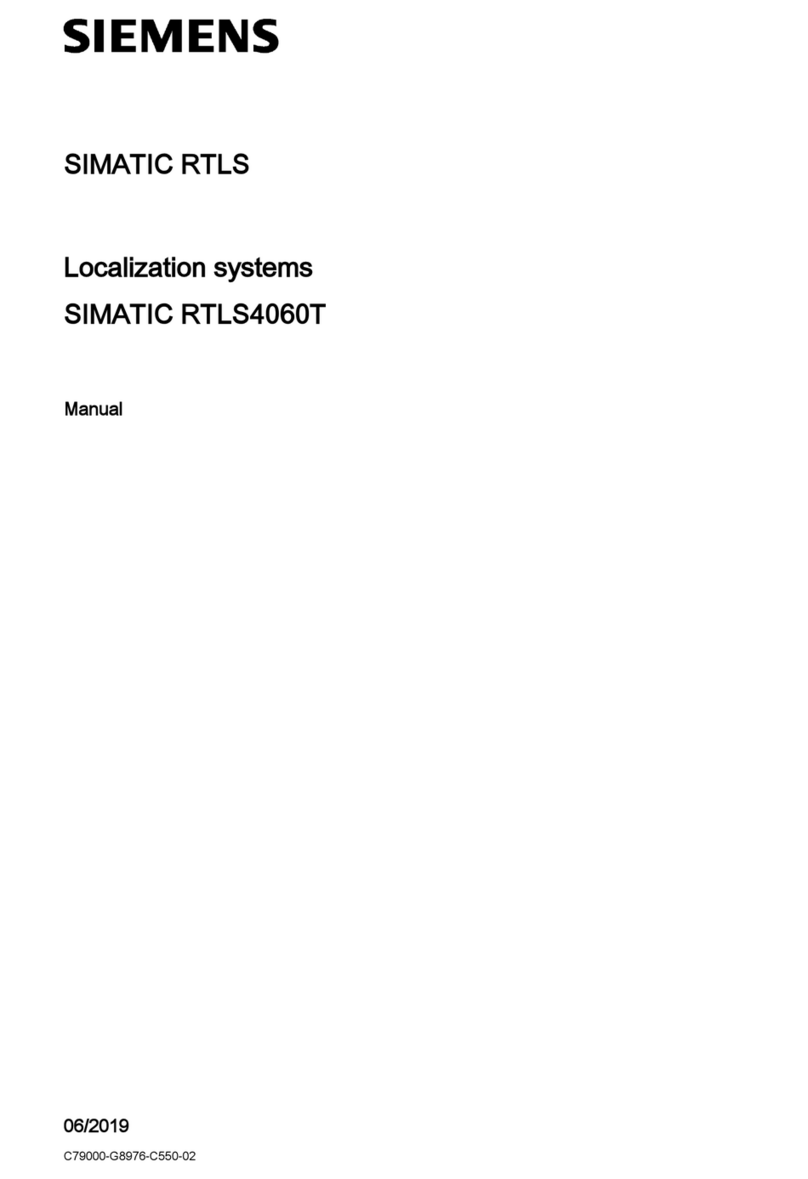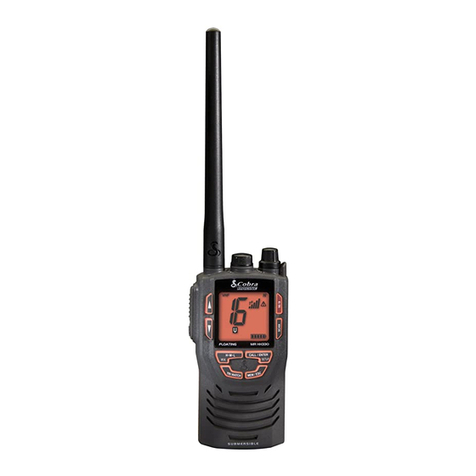
5
TABLE OF CONTENT
1SYSTEM OVERVIEW ...........................................................................................................................7
1.1 PRODUCT DESCRIPTION .........................................................................................................7
1.2 CLASS AVS.SOTDMA CLASS BVS.CSTDMA CLASS B.............................................................10
1.3 EQUIPMENT IN THE BOX.......................................................................................................11
2INSTALLATION.................................................................................................................................. 12
2.1 INSTALLATION PROCEDURES ..................................................................................................12
2.2 MOUNTING DEVICE MAIN UNIT ............................................................................................13
2.3 VHF ANTENNA INSTALLATION ...............................................................................................14
2.4 CONNECTING TO VHF RADIO (B600S ONLY)............................................................................15
2.4.1 FM radio connection (B600S only)..................................................................................15
2.5 GPS ANTENNA INSTALLATION................................................................................................16
2.6 CONNECTING WITH NMEA 0183 DEVICES ..............................................................................17
2.7 AIS SILENT MODE CONNECTION............................................................................................18
2.8 CONNECTION TO NMEA 2000 NETWORK...............................................................................19
2.9 CONNECTING TO A CHARTING PROGRAM VIA USB ......................................................................20
2.10 CONNECTING POWER CABLE .................................................................................................21
3CONFIGURING YOUR WIDELINK B600 .................................................................................... 22
3.1 CONNECTING TO YOUR AIS TRANSPONDER ...............................................................................22
3.1.1 Required Items ...............................................................................................................22
3.1.2 Installing “AIS Configuration Tool” ..................................................................................22
3.1.3 Three steps to connect AIS transponder.........................................................................23
3.1.4 Home page of the application ........................................................................................24
3.2 PROGRAMMING YOUR VESSEL DATA.........................................................................................25
4GET STARTED.................................................................................................................................... 26
4.1 LED INDICATORS ................................................................................................................26
4.2 MICRO SD CARD................................................................................................................27
4.2.1 Data Logging...................................................................................................................27
4.2.2 Firmware Upgrade via Micro SD Card.............................................................................27
4.3 WI-FI CONFIGURATION (WIDELINK B600W ONLY) ...................................................................28
4.3.1 Access Point Mode .........................................................................................................28
4.3.2 Client Mode ....................................................................................................................30
4.4 BUILT-IN INTEGRITY TEST (BIIT).............................................................................................31
4.5 AIS VIEWER DESCRIPTION....................................................................................................31
4.6 INTRODUCING AMEC AIS APP .............................................................................................32
5SPECIFICATIONS .............................................................................................................................. 33
5.1 PRODUCT SPECIFICATIONS ....................................................................................................33
5.2 DIMENSIONS .....................................................................................................................35
5.3 SUPPORTED NMEA 2000 PGN AND TRANSLATION LIST ............................................................37
5.4 SUPPORTED NMEA 0183 SENTENCES....................................................................................39
6TROUBLESHOOTING ...................................................................................................................... 40
7ABBREVIATIONS.............................................................................................................................. 42
8FCC INTERFERENCE STATEMENT .............................................................................................. 43
9RF EXPOSURE WARNING .............................................................................................................. 44


